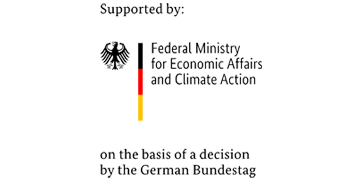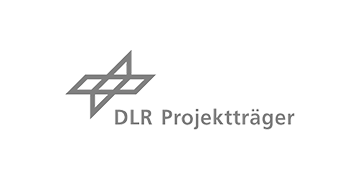| Theme | Factory planning, Artificial Intelligence |
|---|---|
| Project title | Development of a method for quantitative, multidimensional factory layout planning by mathematical modeling of relevant characteristics for factory planning (MeFaP) |
| Project duration | 01.09.2017 – 29.02.2020 |
| Video | |
| Results | |
| Download | |
| Press release |
The quality of a factory layout significantly influences the market-oriented production and thus the economic success of a company. The effectivity of a factory planning project therefore depends on the quality of the layout planning.
At the moment there are several procedures for facility layout planning: manual planning by experts and automated planning using methods from Operations Research. Both methods are limited in their evaluation methods. The factory evaluation is either qualitative and multidimensional or quantitative, but limited to a few objectives. In order to overcome these deficiencies, a method for the quantitative, multidimensional ad hoc factory evaluation has been developed in the previous project "QuamFaB". Based on this, it is now possible to make the layout planning more efficient.
The goal of the research project "MeFaP" is to develop a method for quantitative, multidimensional factory layout planning, which reduces the planning effort compared to conventional methods and at the same time improves the quality of the planning results. Thereby companies should be enabled to execute factory planning projects independently.
Open-source software for factory planning
With the MeFaP software, which was developed in the research project, facility layouts can be automatically planned, evaluated and optimized. The software can be used without prior knowledge.
The open-source software was published under the software license European Union Public Licence V. 1.2 and is freely available via GitLab: https://gitlab.com/iph-group/lo_aif_mefap_2017/mefap
Publications about the project
Volatile markets and increasing product variance lead to more complex internal material flows. In order to cope with this, a significant increase in the flexibility and adaptability of prevailing intralogistics systems is necessary. (Small-scale) modular conveyor systems can be used to make intralogistics more flexible. Obstacles for the practical use are the low distribution as well as the high investment costs. In order to reduce reservations as well as risks, an evaluation and optimization method as well as an applicationoriented planning tool for modular conveyor system layouts were developed in a research project. It enables both planning service providers and users to evaluate modular conveyor systems and to exploit their potential.
Conveyor Technology, Layout Planning, Optimization, Genetic Algorithm, Software
In this paper, a new solution for the facility layout problem is presented. The approach was integrated into a planning software. The aim of the MeFaP research project was mainly the development of a user-friendly decision support regarding the facility layout problem for small and medium-sized companies. Therefore, a realistic modelling of the planning problem was focused on. Thus, a path planning with area allocation was integrated, for example. The metaheuristic Tabu Search was selected as a solution approach. To ensure an efficient optimisation, the optimisation is performed in two steps, once without and then with route planning. The experiments were performed with the objectives material flow distance, temperature and cleanliness, which are briefly described. The results of the experiments were compared with current solution approaches.
facility layout problem, factory planning, multi-criteria, metaheuristic, tabu search, software
Software for an Automated Multidimensional Factory Layout Optimisation: Layout planning is a complex planning task in the context of factory planning, which up to now has usually needed to be carried out manually. Although many optimisation methods for the underlying problem have been developed in the past, they were only applicable to a small group of experts, mostly from universities. Therefore, an easy-touse software for layout planning was developed in a research project to provide companies with access to these optimisation methods.
Factory planning, facility layout planning, optimization, operations research, software
Currently used methods for factory layout planning are limited in their evaluation methods. Factory evaluation is either qualitative or quantitative, but limited to a few objectives. These deficits were overcome by the development of a quantitative, multidimensional ad hoc factory evaluation method. On this basis, it is now possible to develop a method for factory layout planning that reduces the planning effort and significantly increases the quality of the solution.
facility layout planning, factory planning, operations research, mathematical modelling








